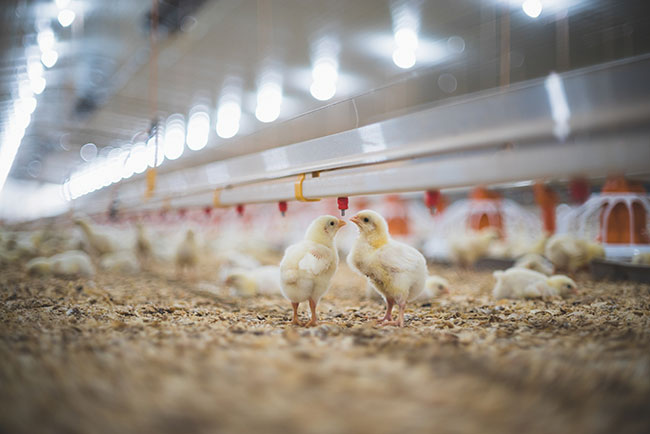
Prioritize pH management
By Treena Hein
Features Barn ManagementResearch shows lower water pH can foster better performance

A water test at the end of your drinker line is essential in order to guide you in pH adjustment. It’s particularly important now for Canadian poultry producers to better manage water quality as they continue to adjust to new production realities.
Water quality is an aspect of poultry production that’s getting much more attention right now due to research results tying it to optimum bird health and performance. However, Derek Detzler advises his fellow broiler producers to not just read about water quality, but join him in acting on the science, if they haven’t already.
Specifically, Detzler got his water tested and slightly lowered the pH at his 120,000-bird operation near Kitchener, Ont.
“Initially, I hadn’t been concerned what my pH was at, which was hovering about 7.8,” he says. “However, when I started making small reductions, I noticed drier litter and a small increase in performance. The cost and time involved in getting water tested and then trying an acidifier is not large. This is really important for broiler producers right now, because we have to be coherent of new production realities such as regulated antibiotic reduction.”
He observes, “The reality is that our work as broiler producers has gotten tougher. This makes optimum management, barn environment, feed and water even more critical.”
Even though Detzler has been doing raised without antibiotics production for 16 years, he says he still has much to learn. As mentioned, in the past, water pH is not something Detzler had on his radar.
He knew it was important, but he believed he was already using good-quality water. However, recently Detzler has observed how water quality management can help add a layer of protection to bird health.
It was a little over a year ago when he first started digging into some of the research relating to the extent that water pH can impact nutrition, gut health and bird performance. There have been many studies published in recent years about water quality and gut health in chickens.
For example, another set of brand new results were just published in September 2021 in the journal Animal Nutrition, where the scientists conclude that, “Collectively, diet supplementation with acidifiers could improve the growth performance, meat quality and intestinal health of broilers.”
Detzler says, “The science is clear. Lowering pH can inhibit growth of pathogenic bacteria that may be harbouring in your waterlines. Most enzymes like phytase are generally more active in a lower pH environment, which can help catalyze the hydrolysis of phytic acid.”
He adds that producers may never know why they had an improvement. “But we repeat and repeat again, to hone production practices. How many of us chart daily water consumption? How many of us do anything with the data? There are certainly more questions to ask with more information.”
His colleague Dominic Frappier, Jefo liquid products technical specialist, explains that water hardness (concentration of calcium and other minerals) and iron level can also impact water consumption. He and Detzler, therefore, both advise that before you acidify, you should not only test for baseline pH, but also bacteria level and other aspects of water quality. They also note that more acidification generating a super-low pH isn’t always better. Producers must use caution to ensure it doesn’t negatively affect drinking line equipment.
And while lower water pH discourages bacterial growth, barn waterlines must of course be cleaned to keep biofilm to a minimum. Frappier explains that, depending on farm water quality, producers may have to do this every flock.
Print this page